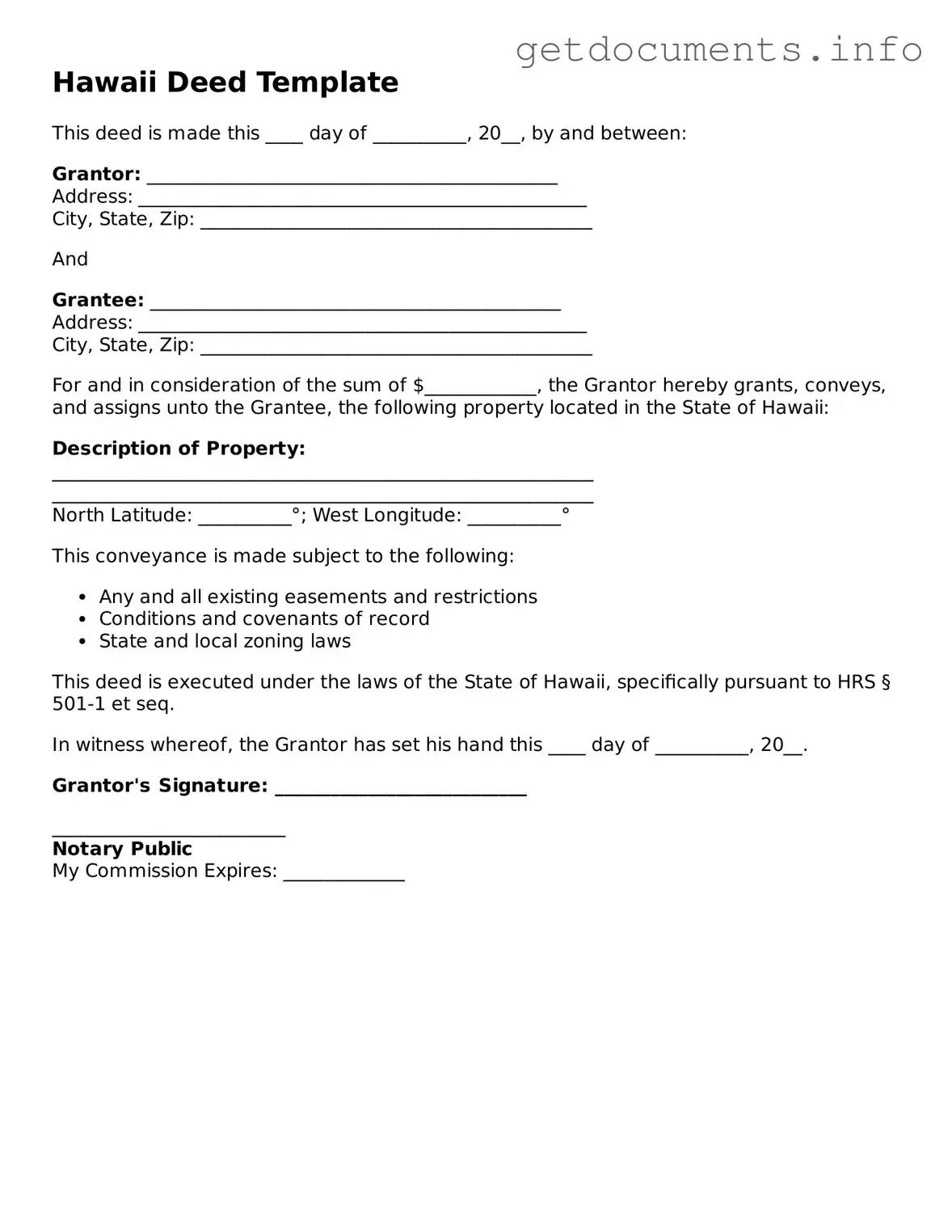The Hawaii Deed form is an essential legal document used in real estate transactions within the state. It serves as a formal instrument for transferring property ownership from one party to another. This form includes critical information such as the names of the grantor and grantee, a detailed description of the property, and the signature of the grantor. Additionally, it may specify any conditions or restrictions related to the property transfer. Understanding the various types of deeds available in Hawaii, such as warranty deeds and quitclaim deeds, is crucial for anyone involved in property transactions. Proper execution and recording of the deed are necessary steps to ensure the legality of the transfer and protect the rights of the new owner. By familiarizing oneself with the Hawaii Deed form, individuals can navigate the complexities of property ownership more effectively.
